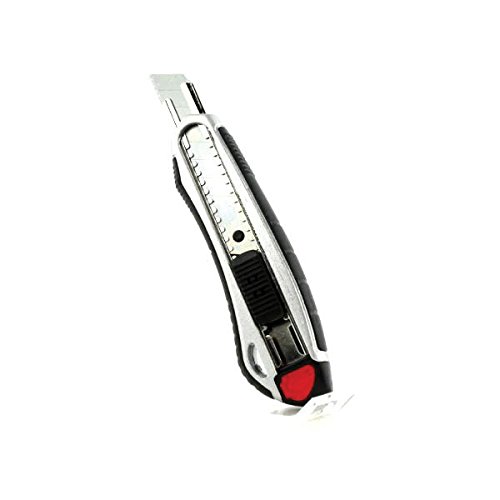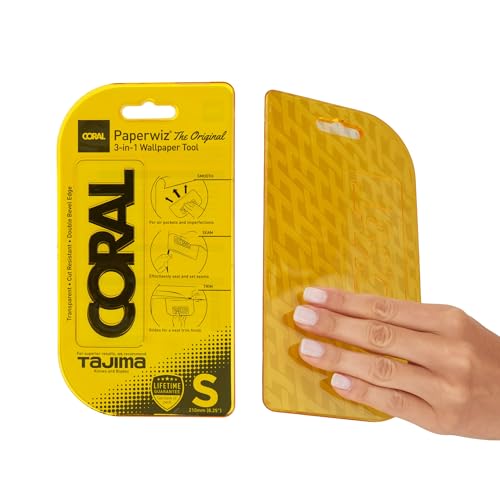Fed up with bubbles in wallpaper? Discover the causes and what to do to get rid of them
No one wants to see bubbles in their newly installed wallpaper. Here you’ll find pro tips on how to stop them from happening and make them disappear like they were never there

Unwanted bubbles in wallpaper are irritating and annoying. They ruin a smooth finish and can be a tell-tale sign that the underlying surface may need attention. But getting your preparation and installation right goes a long way to making sure that bubbles won’t be an issue.
Knowing how to wallpaper is key to keeping bubbles at bay, but it’s not a guarantee. Don’t panic if bubbles do make an appearance, they are not difficult as you might think to get rid of. Here you’ll find some must-follow pointers to ensure your walls are smooth and bubble-free.

Gary Tidman is a seasoned home improvement and construction expert with over 35 years of hands-on experience across the UK, Europe, and the Middle East. He has tackled everything from bespoke residential builds to complex retrofits in heritage and modern properties.
Causes of bubbles in wallpaper
There are a host of reasons for bubbles in wallpaper, including damp, as Gary Tidman, Lead designer at Only Lifts, shares, “One of the main culprits is moisture.” He adds, “If the wall is damp when the wallpaper is applied, or if it gets wet after it’s been put up, the adhesive can weaken and cause the wallpaper to lift, creating bubbles.”
This can be a bigger issue in kitchens and bathrooms, as Tidman points out, “Humidity can also play a part where moisture levels are higher.”
But more practical problems, such as incorrect adhesive application, can cause problems as Tidman reveals, “If too much or too little paste is used, or if it’s not spread evenly, it can cause the wallpaper to shift, resulting in bubbles.” He adds, “Similarly, if air pockets are left behind during the application, they’ll eventually lead to those annoying bubbles.”
Poor preparation can also be a factor, as Eric Bramlett, owner of Bramlett Real Estate, shares: “Dust, grease, or old flaking paint keep fresh paste from sinking in, so trapped air has nowhere to escape.”
So, if you are removing wallpaper first, make sure to prep the walls before putting up new wallpaper.
Bring your dream home to life with expert advice, how to guides and design inspiration. Sign up for our newsletter and get two free tickets to a Homebuilding & Renovating Show near you.

Eric Bramlett is the owner of Bramlett Real Estate. He has extensive experience in real estate development and brokerage management. They have won multiple industry awards and been featured in top media outlets such as Axios, Bloomberg and Forbes.
Try these tools to help prevent bubbles in wallpaper
How to prevent bubbles in wallpaper
No DIYer wants bubbles in their wallpaper, and the right preparation will help, as Bramlett shares, “To stop bubbles before they start, it’s essential to prepare the wall the right way.” He adds, “Check for leaks or moisture, and fix any problems before putting up wallpaper. Clean the wall and use a primer that works well in humid areas.”
Use a filler, such as this Tetrion Easy-On Interior Filling and Jointing Compound from Amazon, for cracks and holes. Then, sand down the area with fine sandpaper to achieve a smooth finish. Make sure to spend time doing this to get a stable, smooth base.
Bramlett adds that another common mistake is putting up paper too quickly. “Let the wallpaper strips sit for the time the glue instructions recommend before hanging them.”
He adds, "Ensure you mix the paste until it’s smooth and apply it in a thin, even layer. As you hang each strip, smooth it out with firm strokes to push out air and help it stick properly.” This allows the paste to penetrate the wallpaper, making it easier to hang.
To help eliminate bubbles, smooth down from the centre and then brush outwards towards the edges to push out any air. Getting rid of bubbles is much easier when the wallpaper is still wet. So, after putting up wallpaper, check for bubbles. If you do find any, lift the wallpaper and smooth out again, ensuring all bubbles are gone.
FAQs
Will bubbles in wallpaper go away on their own?
Yes and no. It depends on the cause, but when you first hang wallpaper small bubbles often appear, but as the paste dries the bubbles often disappear. Leave your newly put up wallpaper to dry for 24 hours and then see if you have any bubbles.
Can you get bubbles out of wallpaper with a hair dryer?
If you have left your wallpaper to dry properly – over 48 hours – then a hairdryer by itself is unlikely to get rid of the bubbles. A hairdryer, along with some other tools, might do the job.
First, try to smooth down the bubble with a wallpaper brush or a wide plastic putty knife – like this Plastic Putty Knife Set from Amazon – as this is less likely to tear the paper.
If that doesn't work, combine the hair dryer with a wallpaper syringe – like the Syringes & 14G Blunt Needle from Amazon to get rid of a bubble. To use the syringe, first fill it with wallpaper paste, push it into the bubble, fill the bubble, and then smooth it out. Wipe away any excess paste with a damp cloth and use a hairdryer to finish.
For larger bubbles use a very sharp craft knife to create a slit in the bubble and use a brush to work in the paste under the wallpaper.
Why is my wallpaper bubbling when I paint it over?
One common reason that bubbling appears when painting is that the wallpaper has not been left long enough to dry before you start painting. So the first step is to make sure that any new wallpaper has dried out fully before painting.
When painting over wallpaper you are wetting the surface again which can cause areas to lift and create bubbles. Tidman says, "The moisture in the paint can affect the adhesive, especially if the wallpaper hasn’t been primed properly or if it’s not a paint-friendly type of wallpaper." He adds, "This added moisture can cause the adhesive to loosen, which makes the wallpaper pull away from the wall and creates bubbles."
Tidman suggests a simple tip to help stop bubbles, "It’s best to apply a primer designed for wallpaper to seal the surface and protect the adhesive."
If you are wallpapering new plaster, there are a few steps you need to take to ensure success. The same applies when hanging patterned wallpaper. When you're finished, make sure you know how to dispose of wallpaper paste correctly.
Steve Jenkins is a freelance content creator with over two decades of experience working in digital and print and was previously the DIY content editor for Homebuilding & Renovating.
He is a keen DIYer with over 20 years of experience in transforming and renovating the many homes he has lived in. He specialises in painting and decorating, but has a wide range of skills gleaned from working in the building trade for around 10 years and spending time at night school learning how to plaster and plumb.
He has fitted kitchens, tiled bathrooms and kitchens, laid many floors, built partition walls, plastered walls, plumbed in bathrooms, worked on loft conversions and much more. And when he's not sure how to tackle a DIY project he has a wide network of friends – including plumbers, gas engineers, tilers, carpenters, painters and decorators, electricians and builders – in the trade to call upon.




